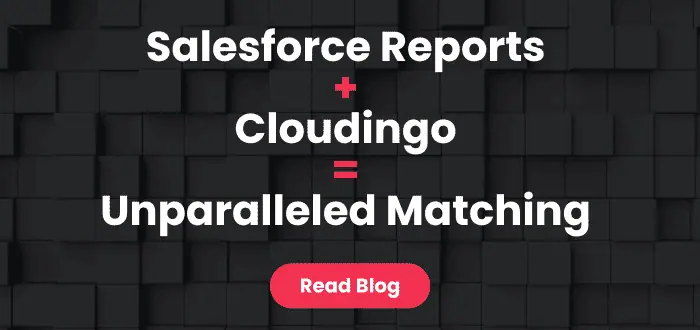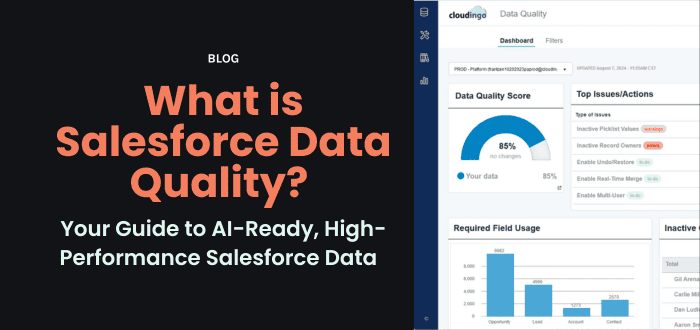May 23, 2024
Salesforce Reports + Cloudingo = Unparalleled Matching

Did you know that you can use Salesforce reports with Cloudingo Data Maintenance filters for updating and deleting?
By integrating Salesforce reports into your Cloudingo update and delete process, you can achieve a more granular level of data management across objects, ensuring your CRM remains clean, accurate, and efficient.
Why Use Salesforce Reports with Cloudingo?
First off, if you want to filter for one object, Cloudingo is fully equipped to run that analysis for you. But if you are looking to get more granular across multiple objects, a Salesforce report used by a Cloudingo filter for a delete or update is your best path. Salesforce reports can give you more flexibility in defining the list of records you want to act on.
For instance, imagine you want to delete accounts that haven't had any opportunities in the past five years. Creating a Salesforce report to identify these accounts and then using that report within Cloudingo ensures that your criteria are met exactly, leading to more effective data cleaning.
Steps to Use Salesforce Reports in Cloudingo
1. Create Your Salesforce Report:
- Begin by creating a report in Salesforce that includes the records you want to target. Remember, Salesforce’s reporting features are powerful. Don’t be afraid to build a custom report that references multiple objects.
- Ensure that the report is set up to filter records based on your specific criteria (e.g., accounts with no opportunities in five years, contact with no activities in the past year and who have opted out of receiving email, task and activity records that are older than three years).
2. Include the Record ID:
- In your Salesforce report, make sure to place the Record ID in the leftmost column. This is crucial as Cloudingo uses this ID to accurately identify records for action.
3. Save the Report Appropriately:
- Save your report in a location accessible to the user ID associated with Cloudingo or in the Unfiled Public Reports folder to ensure it can be easily used by Cloudingo.
4. Use the Report in Cloudingo:
- When setting up a delete or update process in Cloudingo, you will be prompted to choose whether to build criteria or use a report.
- Select the option to use a report and choose the report you created in Salesforce from the dropdown menu.
5. Run the Process:
- Execute the delete or update process. Cloudingo will use the IDs from your Salesforce report to apply the changes, ensuring that only the records meeting your specific criteria are affected.
Tip
- Test Before Implementing: Before running large-scale deletions or updates, test the process on a small subset of data to confirm it works as expected.
- The Salesforce UI limits the display of report results to 2000 records. Because of this, Cloudingo can only take action on 2000 records at a time. If your report is longer than 2000 records, simply run the Cloudingo Data Maintenance filter multiple times as records drop off the report.
By leveraging Salesforce reports within Cloudingo, you can achieve unparalleled precision in managing your CRM data. This powerful combination helps you maintain a clean, organized, and effective Salesforce environment, ultimately supporting better business decisions and operations.
Start integrating Salesforce reports with Cloudingo today and take your data management to the next level!





